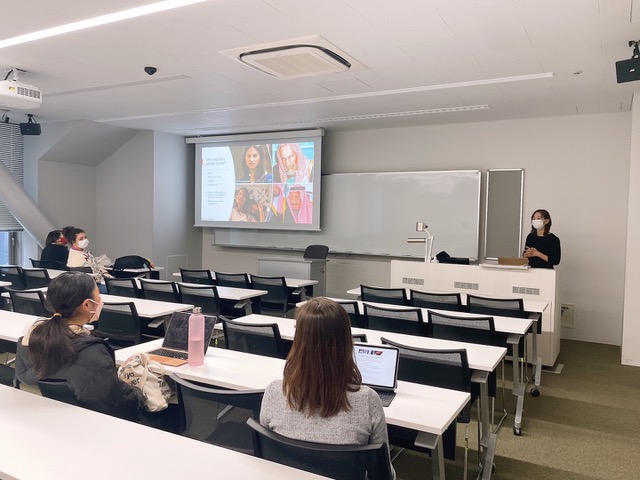Class Introduction:CONTEMPORARY SOCIETIES OF THE MIDDLE EAST
Comment from Professor:
Women in the Middle East are often portrayed as voiceless victims who should be saved. But such an assumption oversimplifies the lives of women. This course will provide a basic overview of the modern history of women in the Middle East, including how they were portrayed by Orientalists in the early modern period, and how women from the
Middle East resisted to such portrayals. In class, we closely look at the rise and development of women's movements in various countries in the region, which of course includes those that have failed or faded away. The course aims to obtain a holistic understanding of gender issues and women in the Middle East.

Class Interview
This course explores the history of women and feminist movements in the Middle East,
unpacks orientalist representations of Middle Eastern women, and fosters nuanced
understandings of women’s lived experiences in countries ranging from Tunisia to Israel.
The course consists of on-demand lecture videos, reaction papers, and occasional inperson
classes where we discuss a short film depicting the lives of people living in Middle
Eastern societies. The reason that I decided to take this class traces back to my first year
when I took another class taught by Prof. Tsujigami on the history of feminist movements
throughout the world and the concept of intersectionality. It was an eye-opening class
that deepened my interest in gender issues. I decided to take another class by Prof.
Tsujigami to learn more about how women in different Middle Eastern societies
experience and navigate gender inequalities based on their varying socioeconomic
contexts. I also wanted to learn more about the influences of Western colonial and
orientalist thought in shaping the widely held images of Arab women as ‘voiceless’ or
‘powerless’ victims needing to be saved from their religion and culture. Through this
course, I have also learned how the problem of gender inequality in Middle Eastern
societies is far more complex than it seems and applying intersectional lenses could be
helpful in deepening our understanding of the issue.
One of the unique aspects about this course is that we can watch short films based on
Middle Eastern societies, as well as have the time to openly discuss the films together.
There are many valuable points that can be discovered and gained from watching films.
For instance, they allow us to enter into the worlds of the characters and to experience
what it might be like to live in their social, political, and economic contexts — something
that cannot be as effectively expressed through lectures or readings. Through the class
discussions that follow the films, we are able to further expand our perspectives. Not
only has this course deepened my understanding of the history of feminist movements
and gender-based struggles in the Middle East, but it has also been a good opportunity
for me to take a deeper look within myself and to notice the assumptions or
preconceptions I might have towards women living in Middle Eastern societies. I hope
this will help me approach discussions and debates surrounding gender issues in the
Middle East from a broader perspective, as well as help me to build bridges with women
from these cultures in the years ahead.
(Mana Short, Third-year, Faculty of Global Studies)
This class looks at gender, sexuality, and ethnicity/race in the Middle East in an agentive
and critical manner. I took this class because I wanted to challenge my preconceptions
about the Middle East and the women living there. I was most interested in its focus on
the voices of Middle Eastern women rather than constantly victimizing them. I would
like to have had this class in-person or in a hybrid format to discuss it with fellow
students and the professor more.
(Second-year, Faculty of Global Studies)
